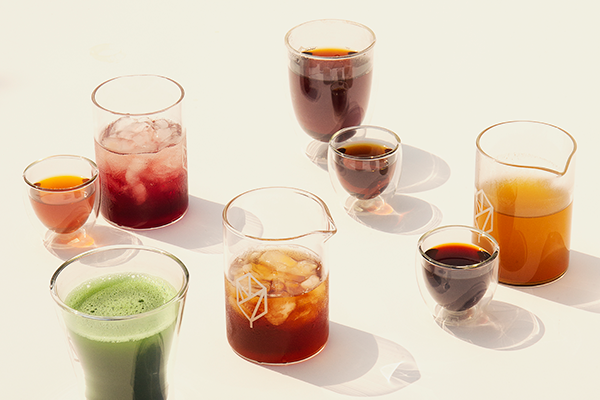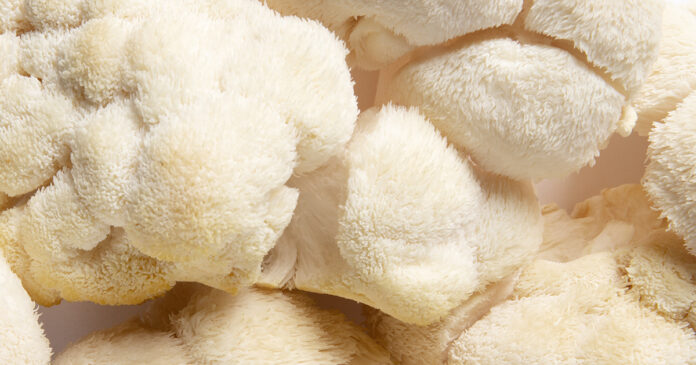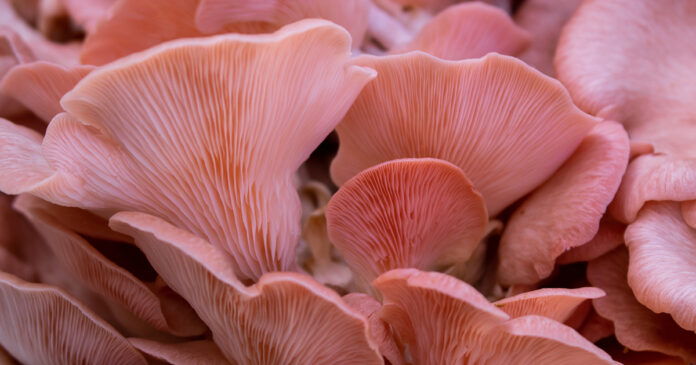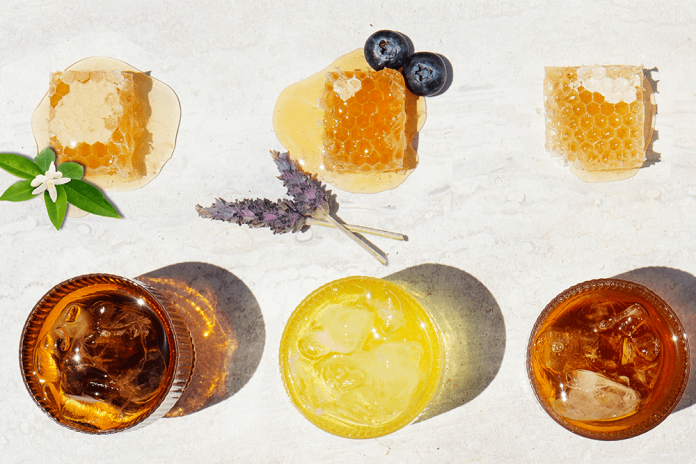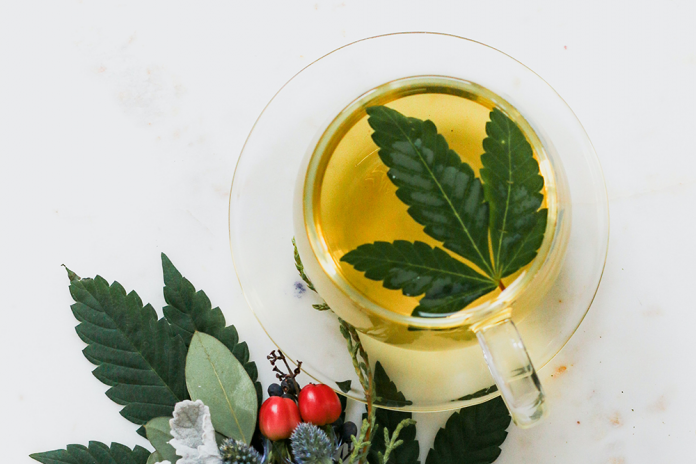Quality counts, especially for something as intimate, epicurean, and culturally revered as tea-drinking. What makes a tea considered to be the best tea in the world?
In the world of tea, higher-quality Camellia sinensis teas not only taste better, but are higher in polyphenol antioxidants and free of mold and toxins, meaning they offer more health benefits.
And who doesn’t want the best in life?
Keep reading to learn what makes for truly excellent tea, the best tea-producing regions in the world, teas that are famous for fascinating reasons, and how to discover your own favorite tea.
What is considered the best tea in the world?
According to the dictionary, the best of something is “that which is the most excellent, outstanding, or desirable.”
Of course, people don’t always agree about which teas are the most excellent, outstanding, or desirable. Even beyond personal preference, there are numerous qualities that differ between the many varieties of premium tea.
For example, certain teas are priced at over $5,000 per serving, while others are so rare they’re virtually never seen outside of the region where they’re produced.
There are also teas that distinguish themselves through unusual manufacturing processes (like fermented pu’er), unique tasting notes, incredibly strong flavors, or high caffeine content.
No matter which tea attributes you desire, however, quality is paramount.
During your quest to find the best tea in the world, you’ll want to stick with pesticide-free, organic loose leaf teas. While tea bags and tea blends are widely available, they’re not the best way to appreciate high quality tea varieties.
In the next section, you’ll learn about the most acclaimed tea-producing regions in the world and why they’re considered to be special.
Which country produces the best tea?
Similar to fine wine, tea possesses an element of terroir, or characteristic essence that comes from its environment.
The soil, terrain, and climate all exert influences on the flavors of teas from different regions. Add in genetic variations and local processing techniques and it’s no wonder that teas vary so much by country.
Here’s what stands out about some of the tea-producing countries and regions judged to be the best in the world:
- China: The largest producer of tea worldwide (over 20% of the world’s tea trade). (1) A rigorous grading system creates an environment where excellent teas are recognized and appreciated.
- India: Produces over 1.3 billion kilograms of tea each year (over 400 billion servings). (2) Tea plantations in regions like Darjeeling and Assam are widely considered to produce some of the best black teas in the world.
- Japan: Consistently produces some of the highest-grade, most delicate teas in the world, including matcha. Japanese tea culture, also called chanoyu or “the way of tea,” revolves around tea ceremony.
- Taiwan: has an unusual mix of coastline and high altitudes, making for many interesting and worthwhile terroirs. The most expensive and famous Taiwanese teas are grown in tea gardens at elevations of nearly 9,000 feet.
- Sri Lanka (Ceylon): Like several other former British colonies, this island Asian country is recognized around the world as a top black tea producer.
Next, we’ll discuss seven outstanding teas that are celebrated around the world for their special qualities.
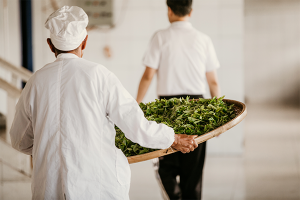
The World’s 7 Best Teas
- Da Hong Pao
- Yabao Spring Buds
- Darjeeling First Flush Spring Harvest
- Aged Pu’er
- Gyokuro
- Sencha
- Dragonwell
For purposes of this article, we’re focusing on “true teas” (meaning they were made from the tea leaves of the camellia sinensis plant). The world of herbal teas is so vast, they should be considered separately. Tisanes like chamomile tea, ginger tea, hibiscus tea, peppermint tea, rooibos tea should definitely be part of your tea consumption as well!
1. Da Hong Pao
Da Hong Pao is an ultra-rare Chinese oolong tea from Wuyishan City, Fujian Province.
The name translates to “big red robe,” in reference to a legend about a gift from a grateful scholar whose illness the tea cured. Its flavor has been described as smoky, mellow, and heavily oxidized.
Recently, 20 grams of Da Hong Pao sold to a wealthy tea connoisseur for $28,000 USD!.
Why so much? Da Hong Pao comes exclusively from six nearly-400-year-old “mother trees” that grow on a rugged cliff near Wuyishan. While the trees once produced around a kilogram of tea per year, they now produce virtually no tea due to their extreme old age.
If you fancy a taste of Da Hong Pao but don’t want to take out a second mortgage, tea made from genetically-identical specimens cut from the original trees is available for around $100 per kilogram.
2. Yabao Spring Buds
Yabao or ya bao tea comes from compact tea buds that bloom in late winter and early spring.
Unlike normal tea buds, yabao buds grow directly on the trunk and main branches of tea plants. Tea-makers harvest yabao from Camellia sinensis, but also from wild relatives of the domestic tea plant, such as Camellia crassicolumna.
The highest-quality, most desirable yabao comes from Chinese Yunnan province, where tea plants grow at elevations over 6,500 feet.
The name may derive from yabao, a Chinese game of chance, as the successful harvest and preparation of these buds certainly involves both skill and luck.
Yabao is harvested early, then sun-dried. The light, sweet, and crisp flavor profile of yabao tea is somewhere between a white tea and a pu’er tea, although it’s technically neither.
3. Darjeeling First Flush Spring Harvest
Black tea has an undeserved reputation as a homogenous, mass-market tea.
But Darjeeling first flush teas, typically harvested between February and April, are anything but ordinary.
Unlike other black teas (Earl Grey, English breakfast tea), the spring harvests from the base of the Indian Himalayas tend to be delicate, with notes of honey and caramel. Yet they also have a high caffeine content, making them among the strongest of premium teas.
During a particularly good spring, the tea may be bought up immediately by connoisseurs and thus unavailable outside of the local market.
4. Aged Pu’er
Aged pu’er isn’t a specific variety, but rather a type of tea.
Pu’er (also called pu-erh tea) is a fermented tea traditionally produced in Yunnan Province, China.
For ripe pu’er, a “wet piling” process results in microbial fermentation as well as accelerated oxidation, leading to strong, earthy, and unusual flavors.
But another variety, called raw pu’er, is aged in gentler conditions for longer–sometimes decades.
Aged raw pu’er is one of the most expensive, unusual, and strongest-tasting teas.
The variations found within aged pu’er fascinate tea aficionados, which is why raw pu’er “cakes” can sell for tens or even hundreds of thousands of dollars.
5. Gyokuro
Gyokuro is a fine Japanese green tea that boasts extraordinary qualities, yet remains accessible and affordable for people of ordinary means.
The name translates to “jewel dew” or “jade dew” in reference to the pale green infusion.
Thanks to a high l-theanine content from shading the green tea leaves, gyokuro is very calming, with an umami flavor.
For best results, brew gyokuro at lower temperatures than other green teas, with higher concentrations of tea (as much as 1-2 grams per ounce of hot water).
6. Sencha
Sencha is a broad category of Japanese tea. In fact, it’s the most popular tea in Japan.
Some varieties of sencha (such as shincha or first flush green tea) are considered deluxe, while others are rather commonplace.
It’s certainly not the rarest or most expensive, but many tea lovers believe that sencha is one of the best teas for daily enjoyment.
Because sencha is gently steamed prior to rolling, it’s one of the freshest-tasting green teas. People describe the tasting notes as vegetal, grassy, and reminiscent of seaweed.
7. Dragonwell
For people who don’t enjoy the savory taste of gyokuro or the grassy flavor of sencha, Dragonwell is another premium-yet-affordable tea to check out.
Also called Longjing, this variety from Hangzhou in Zhejiang Province is one of China’s most famous green teas.
Tea-makers shape or pan-fire Dragonwell in a hot wok, giving the leaves a distinctive flat shape.
You’ll find a cup of Dragonwell is satisfying, balanced, buttery, and toasty, with an astringent finish.
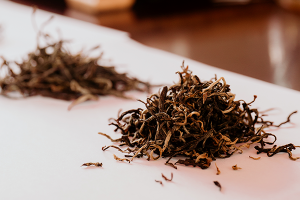
Benefits of Tea
As a bonus, drinking tea actually goes far beyond mere enjoyment. Tea contains polyphenols, which are antioxidants (also known as catechins, EGCG, theaflavins and flavonoids). These antioxidants help your body fight against free radicals and the oxidative stress they can cause.
What that means for you? Tea can help support heart health, healthy brain function, and even support a healthy immune system too. Tea is commonly used to help support healthy weight management too, as it’s thought to support a healthy rate of fat burning as well as promote satiety.
Final Thoughts
Ultimately, you shouldn’t take anyone’s word for the best tea (not even that of a tea company!). Tea appreciation is not a popularity contest.
Even if tea drinkers could agree about the best types of tea, there are too many fine and rare teas around the world to fit on a single list. Even in this article, we’ve only covered “true teas” – which don’t include flavorful herbal tea like rooibos, chamomile or mint tea.
One of the most beautiful aspects of tea is that you can decide for yourself which varieties you love best. And you may have different go-to’s for your iced tea, afternoon tea, or caffeine-free tea. (Fair warning, once you start exploring, you may find yourself with quite a stash!)
To discover which cup of tea tastes the best to you, you’ll need to try teas from all around the world, being sure to focus on loose-leaf, mold- and pesticide-free organic tea varieties. A fun way to find and discover the best tea brands might be to visit tea shops or a teahouse! Of course, we’re partial to the quality, purity and convenience of tea crystals…
